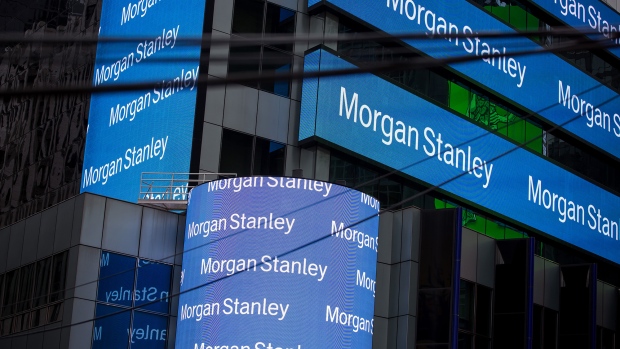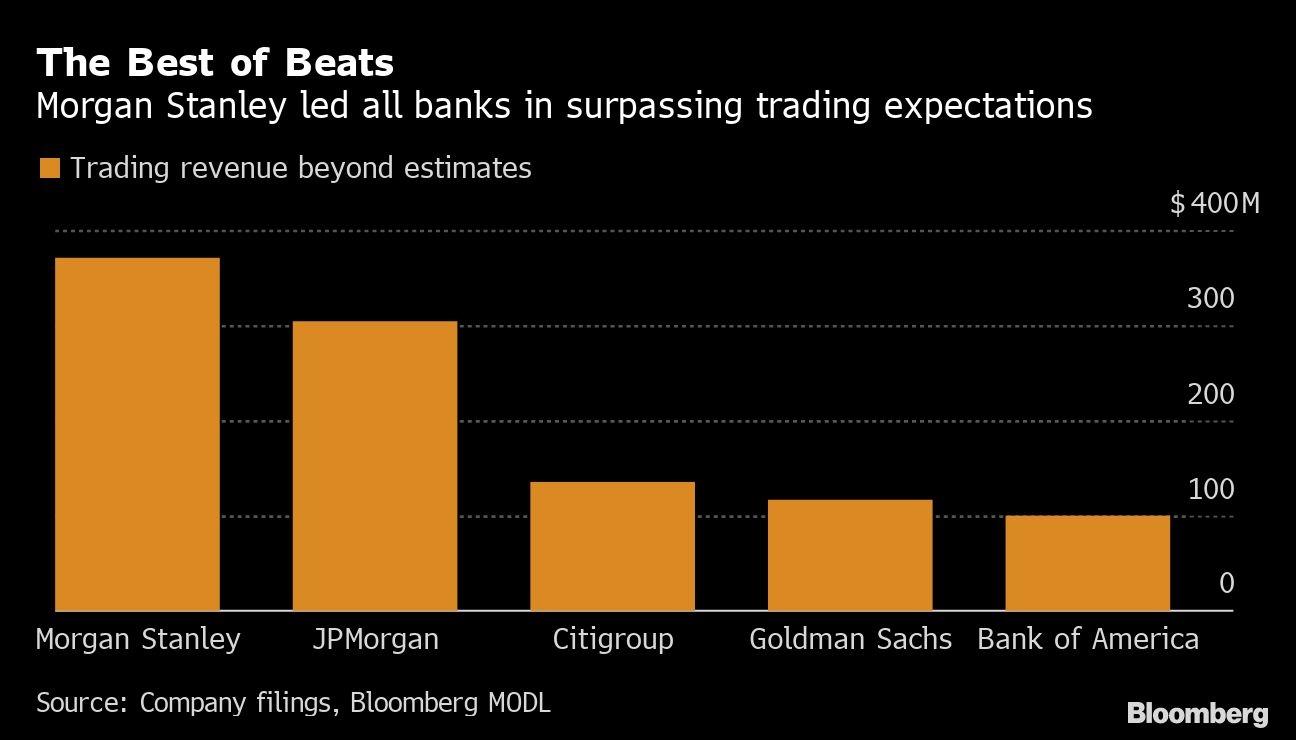Oct 17, 2019
Morgan Stanley traders lead Wall Street with surprising gains
, Bloomberg News

In a quarter when stock and bond desks across Wall Street defied expectations for weak growth, Morgan Stanley’s traders led the pack.
Fixed-income was the standout performer, with the firm’s revenue surging 21% instead of dropping 5% as analysts had predicted. That drove the biggest outperformance in trading revenue among major banks, marking a dramatic reversal from the second quarter, when Morgan Stanley pulled up the rear amid an industrywide slump.
Prospects for revenue had been dour, with analysts predicting a tough quarter because of volatility in fixed-income markets, continued geopolitical tensions and trade disputes. But banks defied expectations, with JPMorgan Chase & Co. posting its biggest increase in fixed-income trading revenue in almost three years.

“Against a relatively difficult trading environment characterized by some seasonality and volatile markets, we performed well,” Chief Executive Officer James Gorman said in a call with analysts. “We’ve been the beneficiary of client-share consolidation and expect this to continue.”
The company’s shares, which are up 11 per cent this year, advanced 2.6 per cent in New York trading at 9:39 a.m., the biggest jump on the 67-company S&P 500 Financials Index. The stock has advanced for seven straight days, a run not seen since March.
Morgan Stanley has found some traction in scaling back its fixed-income trading unit and focusing on parts of debt markets that are starting to resemble the fast-twitch world of stock trading, where the bank is a leader. While the firm is still the smallest of the five Wall Street banks in fixed-income trading, investment bank chief Ted Pick said earlier this year that its share of the business has steadily climbed.
Investment Bank
The firm’s investment bankers also outperformed expectations on gains in fixed-income underwriting and merger advice, helping the bank surpass US$10 billion in total revenue for a third straight quarter.
“The IPO market is quite constructive still,” Chief Financial Officer Jonathan Pruzan said in an interview. He called the pipeline “very healthy.”
While Morgan Stanley beat expectations for investment-banking fees, Bank of America Corp. boasted the biggest jump on Wall Street for the quarter, at 27 per cent. But Goldman Sachs Group Inc. reported a bigger drop in than analysts had predicted, down 15% from last year’s third quarter.
In fixed-income trading, Morgan Stanley’s result “was well ahead of forecast, as was investment-banking revenue generation -- a consistent theme throughout this week,” Susan Roth Katzke, an analyst at Credit Suisse Group AG, said in a note Thursday.
JPMorgan Chase & Co. on Tuesday reported the biggest increase in fixed-income trading revenue in almost three years.
Equities revenue at Morgan Stanley, the industry’s stock-trading leader, came in at $1.99 billion in the third quarter, compared with $1.92 billion estimated by analysts surveyed by Bloomberg.
Key Results:
- Net income rose three per cent to US$2.17 billion, or US$1.27 per share. That surpassed analyst estimates of US$1.17 per share. Return on equity was 11 per cent.
- Fixed-income traders generated US$1.43 billion in the period, better than the US$1.13 billion consensus estimate. Morgan Stanley typically reports the least revenue from bond trading among its top competitors.
- The firm’s investment bankers posted revenue of US$1.54 billion.
- Wealth-management revenue totaled US$4.36 billion. The firm leans on managing money for wealthy individuals and clients for about half its revenue.


